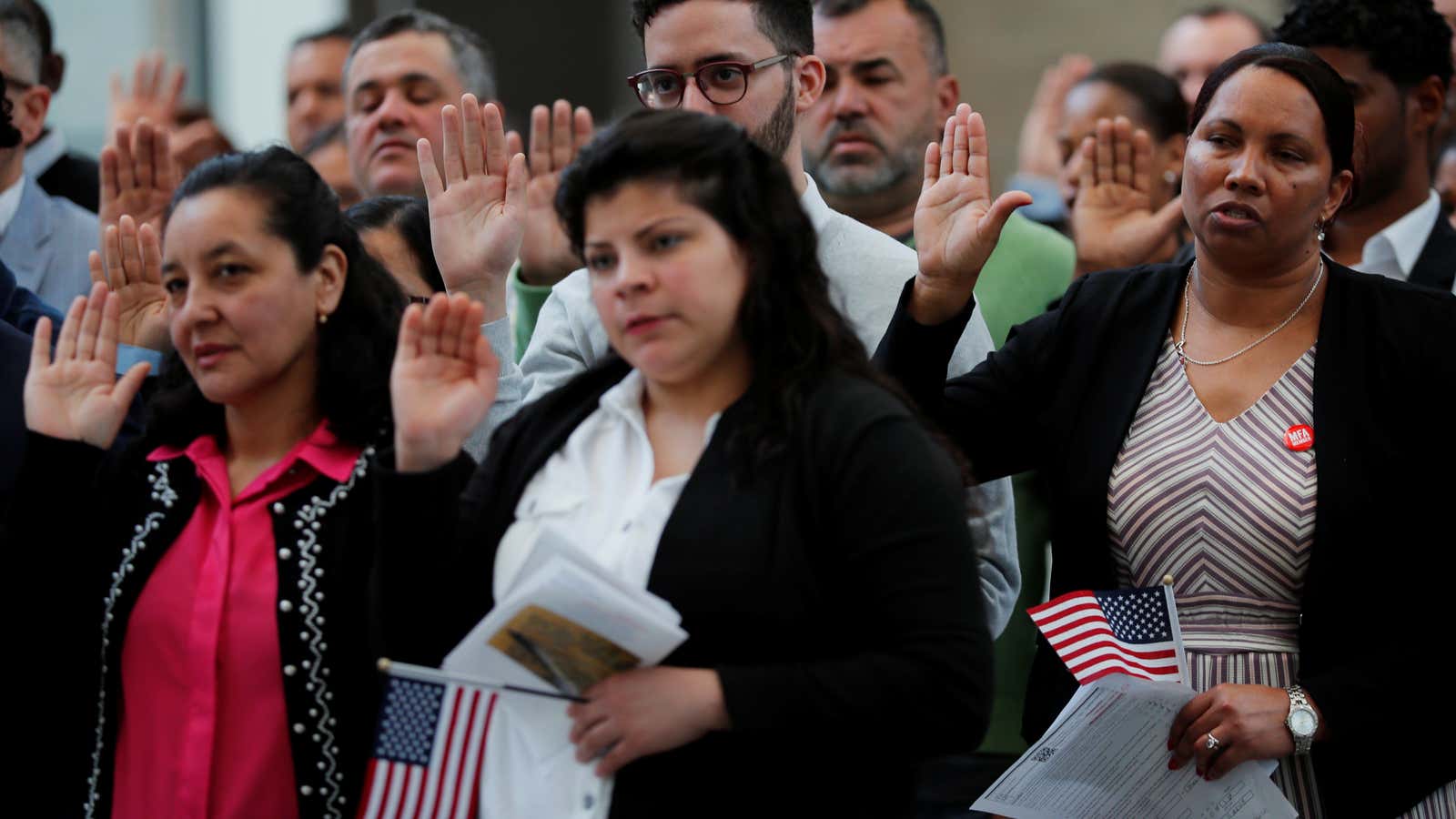When Ran Harnevo first moved to New York City from Tel Aviv in 2008, he ran into a problem any new immigrant would recognize: How does one rebuild their life from scratch in a completely different country? Information on how to set up a bank account, buy a house, or navigate the healthcare and legal system was available, but fragmented.
“When I moved here I just remember the shock of the lack of infrastructure. It’s dramatic,” Harnevo told Quartz.
Unlike many immigrants to the US, Harnevo doesn’t exactly have a humble origin story. At the time, he was the co-founder of a how-to website called 5min, which was later acquired by AOL for $65 million. He acknowledges that Israeli immigrants like him, in most cases, are privileged. But even after 11 years of living in the US, he still runs into problems. “The difficulty is ongoing,” he said.
The lack of a single place to find information as a new immigrant was something that stuck with him. So in 2017, he and Hanan Laschover, the former head of AOL Israel, teamed up to launch Homeis, a social network for immigrants. It began as a site for Israeli immigrants specifically, and has since expanded to include immigrants from India, Mexico, and France. The platform, which includes both an app and a web version, has now reached 500,000 users.
The company raised $12 million in Series A funding in August. And last month, Homeis reverted from a local community view (i.e. Indians from Cleveland, or Israelis from Los Angeles) to a national view, allowing immigrants to communicate with each other nationwide. Homeis members can access guides on everything from filling out a visa application to sending remittances back home. They can use the platform to find a job, browse real estate listings, or find events in their area that cater to their community. Members can join groups to discuss everything from parenting to recipes.
While this information is already available on listservs, Facebook groups, Whatsapp groups, and WeChat groups, Homeis seeks to gather all of it in one place, and do so on a platform that encourages social interaction.
Homeis is one of many new platforms that have cropped up to meet the needs of recent arrivals to the US. As American Banker reported, fintech startups like Nova Credit, Deserve, Credit Stack, and Petal cater to new immigrants with no credit. Nova Credit, which is backed by former American Express chief Ken Chenault, pulls credit history from an immigrant’s nation of origin and uses it to build a US credit score. Mobile remittance apps like Seattle-based Remitly and London-based WorldRemit and TransferWise have all raised more than $100 million in funding this year. Boundless, an online-only immigration services firm, offers a tool that estimates a green card applicant’s chances of being denied. CitizenshipWorks, a free mobile app, offers step-by-step instructions for the naturalization process.
For centuries, immigrants to the US—whether from Poland or El Salvador or South Korea or Somalia—have formed tightly-knit communities in order to survive. When shut out of mainstream institutions like banks or credit unions, they’ve built their own. From salons to restaurants to laundromats, immigrant-owned businesses serve as a steady source of employment, as well as a community center. Hanervo likes to imagine that what Homeis is doing is no different.
“One of the most important things Homeis is doing is that we’re not changing behavior. We researched how communities of immigrants behave offline and we’re giving them the technology to do it better,” Harnevo said.
The platform’s goal is to eventually support all French, English, and Spanish-speaking immigrants across the US, including immigrants from South and Central America (excluding Brazil), and immigrants from French-speaking African and Caribbean nations. Harnevo said he hopes to complete this expansion by mid-2020.
The content in the app is now siloed by language and country. For example, an Indian immigrant in Los Angeles will see posts in English and be able to interact with other Indian users nationwide. Since the user-created content stays within that specific community, there’s no chance of an Indian user seeing a post from a Mexican user or an Israeli user. While it makes sense that many immigration issues will be country-specific or language-specific, many won’t be. For example, a Cameroonian PhD student may simply want advice on job hunting from other foreign-born PhD students.
In that sense, aiming to be a one-stop shop for all new immigrants to the US is a fairly tall order. A new immigrant could be anything from a refugee to a software engineer, and these individuals will likely face unique challenges. For the social aspect of the platform, Homeis operates under the assumption that dividing immigrants into communities by region of origin will be enough to ensure commonality. Still, what a Mexican PhD student needs from a social network is likely different from that of a Korean cab driver or a young Indian family. For Homeis to truly take off, it’ll need to anticipate needs across different occupations and generations, not just origin countries.
Additional reporting by Hanna Kozlowska.
